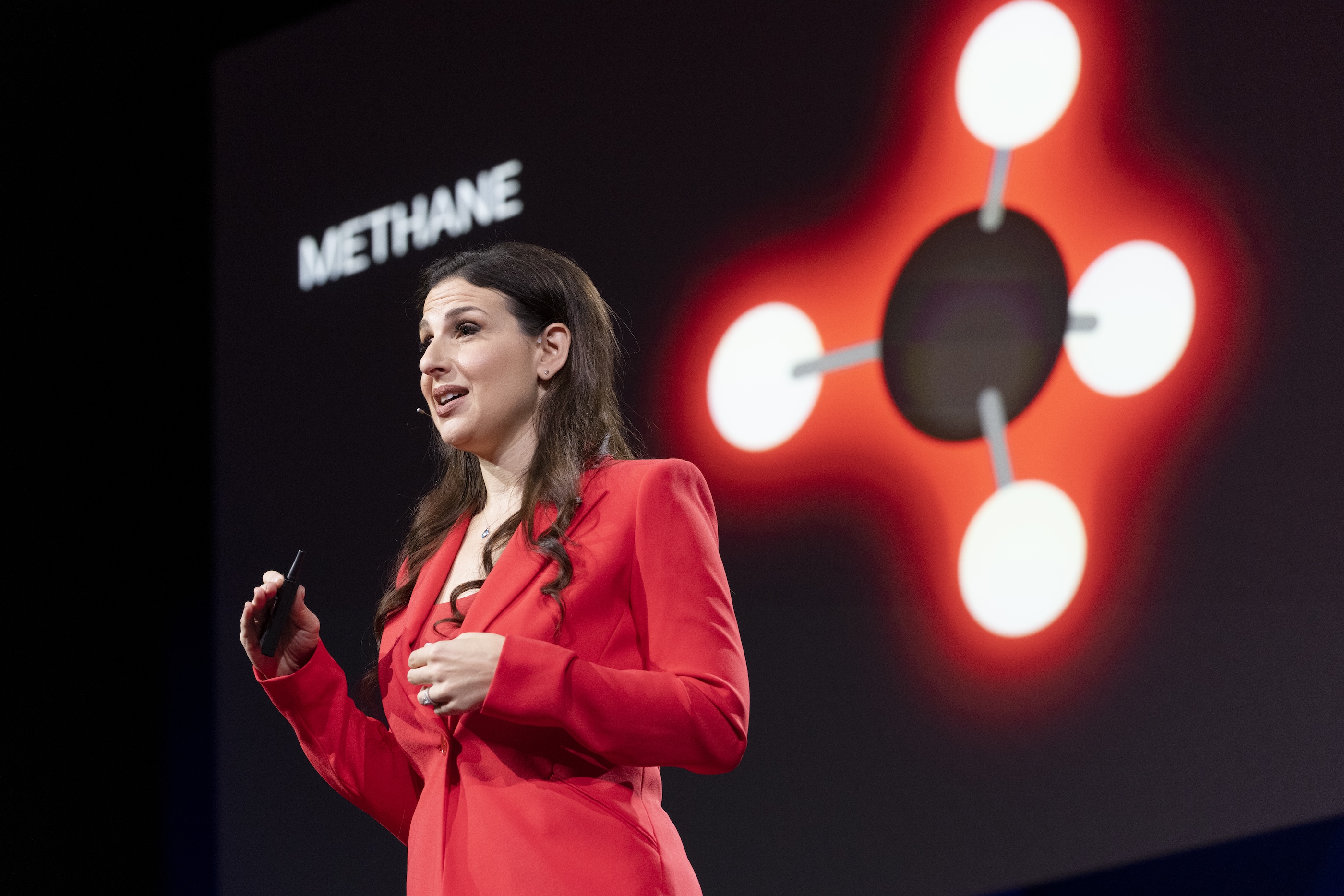Methane in the spotlight: 10 scientific facts you should know
By Ilissa Ocko, Senior Climate Scientist

Methane is in the news as the world moves to curb this powerful climate pollutant.
Just a few examples: At the 2023 U.N. climate conference, the U.S. Environmental Protection Agency announced historic new rules to limit methane, 49 major oil and gas companies pledged to virtually eliminate their emissions of it, and the dairy industry announced an initiative to sharply reduce it.
EDF worked behind the scenes for a long time to make all this happen — and we're part of a new accountability partnership to see that the oil companies meet their commitments.
But the issue of methane is new to a lot of people. So, as a scientist who has studied methane’s impact on the climate for more than a decade, here are my top 10 “greatest hits” for evaluating methane’s role in climate change:
-
At least a quarter of today’s warming is attributed to methane emissions from human activities including agriculture, energy systems and waste management.
Source: Intergovernmental Panel on Climate Change Sixth Assessment Report Chapter 6 Figure 6.12 (2021)
-
Methane emissions from human activities are by far the second largest contributor to today’s warming, second only to carbon dioxide, but because it doesn’t last in the atmosphere long like carbon dioxide does — reducing its emissions can have a near-immediate impact on curbing climate change.
Source: Intergovernmental Panel on Climate Change Sixth Assessment Report Chapter 6 Figure 6.12 (2021)
-
This year’s methane emissions from human activities will cause around the same amount of warming over the next 10 years as this year’s carbon dioxide emissions from burning fossil fuels.
Source: see Calculation #1 below
-
This year's methane emissions from human activities will likely cause more warming over the next two decades than carbon dioxide emissions from all passenger vehicles on the road this year and all coal-fired power plants operating this year.
Source: see Calculation #2 below
-
Sectors that are dominated by methane emissions may cause half of additional warming by midcentury from future greenhouse gas emissions.
Source: Cohen-Shields et al. (2023)
-
Methane emissions from human activities could nearly double by end of century, causing around 1 °C (~2 °F) of additional warming by end of century.
Source: Ocko et al. (2021)
-
Technologies and strategies are available to cut methane emissions from human activities in half which will likely avoid as much warming over the next 20 years as shutting down all the world’s coal-fired power plants.
Source: see Calculation #3 below
-
Cutting methane emissions from human activities in half by 2030 could slow down the average global rate of warming by up to 30% and avoid 0.25 °C (~0.5 °F) of additional warming by midcentury and 0.5 °C (~1 °F) by end of century.
Source: Ocko et al. (2021)
-
Cutting methane emissions from human activities in half could save hundreds of thousands of lives every year and tens of millions of tons of crops every year due to improved air quality given that methane is a major source of ground-level ozone.
Source: UNEP & Climate and Clean Air Coalition (2021)
-
Fast action to cut methane is important for preserving summer Arctic sea ice; combined with net zero carbon dioxide by 2050 goals could yield an 80% chance of success by end of century (as opposed to 50% chance without methane action).
Source: Sun et al. (2022)
As you can see, methane is a big deal. Of course, there’s lots more we need to do to deal with climate change — like ramping down fossil fuel use and ramping up clean energy investment. But these recent steps on methane are real progress.
Meet MethaneSAT: The small satellite that's a big deal for the climate fight
Calculations
Calculation #1
"This year's methane emissions from human activities will cause around the same amount of warming over the next 10 years as this year's carbon dioxide emissions from burning fossil fuels."
Assumptions:
- Present-day methane emissions: 375 million metric tons (Saunois et al. 2020, Minx et al. 2021)
- Present-day carbon dioxide emissions from fossil fuel combustion: 35 billion metric tons (Friedlingstein et al., 2022)
- Methane Global Warming Potential (GWP) with 10-year time horizon: 100 (Equations in IPCC AR6 WGI 2021)
Calculation:
Methane CO2eq-10 = 375*100 = 37500 million metric tons = 37.5 billion metric tons ≈ 35 billion metric tons
Calculation #2
"This year's methane emissions from human activities will likely cause more warming over the next two decades than carbon dioxide emissions from all passenger vehicles on the road this year and all coal-fired power plants operating this year."
Assumptions:
- Present-day methane emissions: 375 million metric tons (Saunois et al. 2020; Minx et al. 2021)
- Present-day carbon dioxide emissions from passenger vehicles: 3.53 billion metric tons (IEA: “Cars and Vans”, 2023)
- Present-day carbon dioxide emissions from coal-fired power plants: 15.5 billion metric tons (IEA: "CO2 Emissions in 2022", 2023)
- Methane Global Warming Potential (GWP) with 20-year time horizon: 80 (Value in IPCC AR6 WGI 2021)
Calculation:
Methane CO2eq-20 = 375*100 = 37500 million metric tons = 37.5 billion metric tons
3.53 billion metric tons + 15.5 billion metric tons = 19 billion metric tons < 37.5 billion metric tons
Calculation #3
"Technologies and strategies are available to cut methane emissions from human activities in half which will likely avoid as much warming over the next twenty years as shutting down all the world’s coal-fired power plants."
Assumptions:
- Half of present-day methane emissions: 188 million metric tons (Saunois et al. 2020; Minx et al. 2021)
- Present-day carbon dioxide emissions from coal-fired power plants: 15.5 billion metric tons (IEA, 2023)
- Methane Global Warming Potential (GWP) with 20-year time horizon: 80 (Value in IPCC AR6 WGI 2021)
Calculation:
Methane CO2eq-20 = 188*80 = 15040 million metric tons = 15.0 billion metric tons, as compared to 15.5 billion metric tons










